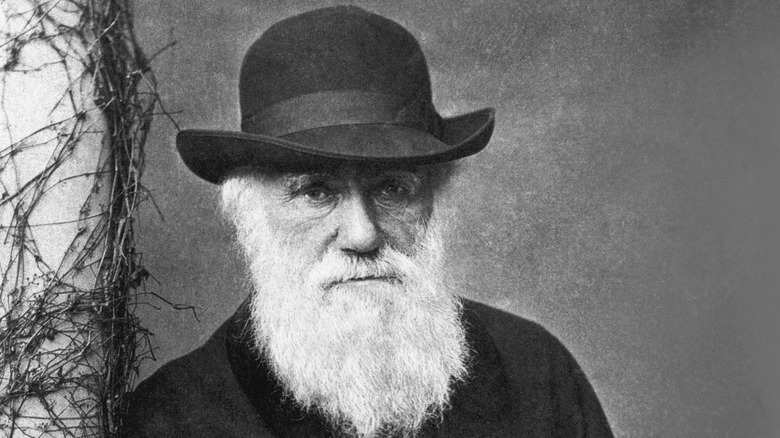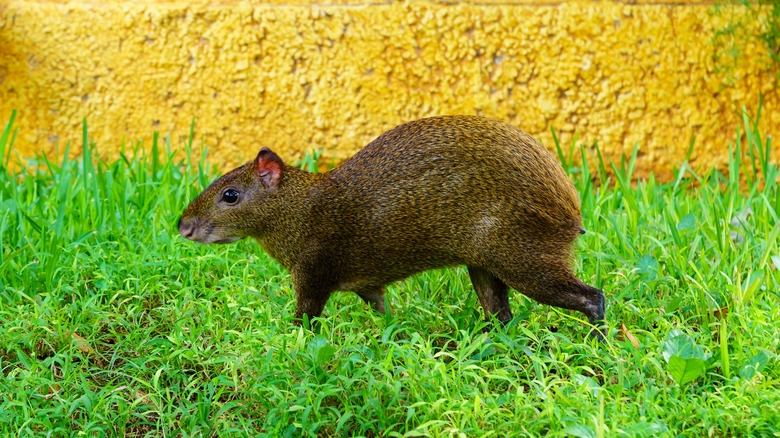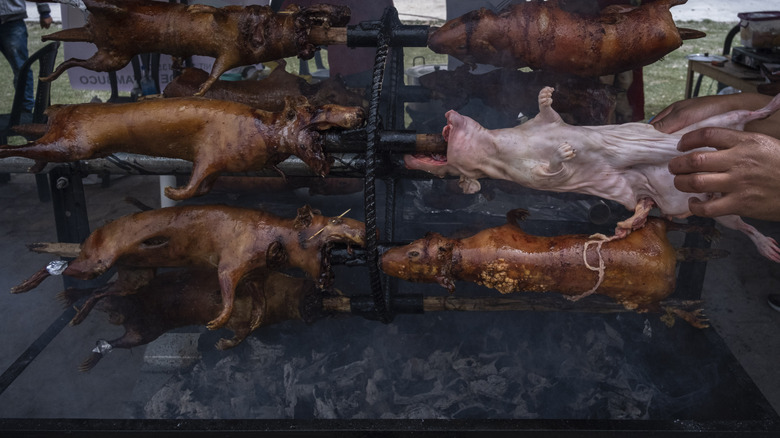The Unusual Meat Charles Darwin Favored Above All Else
Charles Darwin studied animals, but he was adventurous when it came to eating them, too. In college at Cambridge, he and several fellow students formed the Glutton Club, a group dedicated to dining on atypical meats that ranged from bittern and hawk to owl. The last of those, though, was so unpalatable it caused the disbanding of the dining club.
Later in life, while sailing at sea, Darwin continued to pursue his passion for consuming animals not normally found on a dinner plate. He enjoyed roasted armadillos (despite noting that they didn't make for a filling meal when split between two people) as well as puma, iguanas, and tortoises.
His favorite, though, was a 20-pound rodent, the meat of which he described as the best he'd ever tasted.
Though there is speculation about what type of rodent Darwin consumed, many believe that it was an agouti, a Neotropical rodent that can be found in Central America, South America, Mexico, and the Caribbean Antilles.
What is an agouti?
Although Darwin's catch was 20 pounds, agoutis are typically smaller, clocking in at 13 pounds. Their bodies can be long — up to two and a half feet — and their fur tends to be orange, brown, or black.
If it was an agouti that Darwin caught, it's a testament to his hunting skills. Found in the forest, these rodents blend in well with their surroundings. And though their legs are slim, they are fast on their feet. Plus, those feet and legs can help them launch an impressive 6 and a half feet vertically.
Agoutis are still sometimes hunted for their meat. While Darwin did not give an account of how he prepared his meal, one way is to slow-cook agoutiover a fire to ensure the meat has the time to become tender. Another option is to make stewed agouti after marinating the meat.
While Darwin often likened the flavors of the meats that he tried to more familiar varieties (he said that puma tasted like veal and that armadillos were similar in flavor to duck), he gave few details about agoutis outside of his expression of enthusiasm about the meat in general. However, some say that the meat has flavors reminiscent of other game meat like goat, venison, rabbit, and wild boar.
Eating a rodent may sound unappealing to some, but it comes highly recommended by Andrew Zimmern. And if that's not endorsement enough, consider that Queen Elizabeth II dined on a dish in Belize made from gibnut, a rodent similar to Darwin's favorite.
What other animal could Darwin have eaten?
While many accounts say that it was agouti that Darwin ate, some suggest that it was cavy. In his written work in which he describes the meat, he does write "agouti or cavy" and it has been reported that he used those words interchangeably.
Cavies are also rodents and they are native to South America. There are over a dozen different species, but the most well-known may be the Guinea pig.
Eating Guinea pigs, or their near relatives, may be more common than you'd expect. In Peru, Guinea pig (called "cuy") is a prized meat. Peruvians breed them specifically to sell to restaurants, both casual and higher-end. The meat, also best when slow-cooked like agouti, is described as being similar to rabbit and pork.
Just as he's a fan of agouti, Andrew Zimmern also recommends Guinea pig, but that may not be a huge surprise from the creator and host of "Bizarre Foods." However, he's far from alone in his fondness for cuy. In 2013, NPR reported that U.S. imports of Guinea pigs for consumption were on the rise, citing demand from patrons of South American restaurants throughout the country. Meanwhile, well-known restaurant critic Robert Sietsema has been known to wax poetic on the topic of dining on the delicacy.
Whether the meat that Darwin snagged was an agouti or a cavy may remain a mystery, but it's safe to say that he's in good company with those who have enjoyed either.



